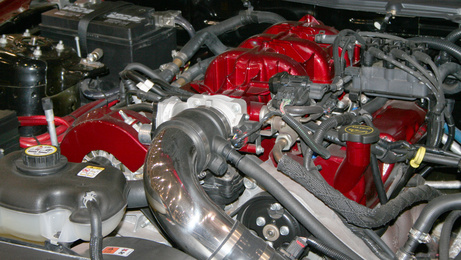
When considering the different types of automatic transmissions on the market today, it would be unwise to settle on any one of them as the "best" or "most advanced." The fact is that every design currently in use has been in development for almost a century. Although the applications and load ratings change, ultimately the type chosen for the car depends on engine design, fuel economy requirements, desired performance and customer demand.
This transmission type is the one that most people think of when they hear the word "automatic" and has been used in passenger cars for over 70 years. Planetary Gear Automatics (PGAs) use a series of hydraulic servos and check valves to activate their internal clutches, which route power through a small planetary gear drive at the back. If you want to see a planetary gear-set in action, an everyday place to find one is inside of a hand-crank, wall-mount pencil sharpener. The primary benefit of a PGA is extremely high strength and reliability, due primarily to the fact that the engine's torque load is spread over a larger area within the gear-set. The first things to break on a typical PGA are the clutches, which can be replaced in a matter of hours. The disadvantages are design complexity, high cost of manufacture and weight.
First used in 1912 for racing applications, automateds have been around almost as long as the manual transmission itself. Internally identical to a manual transmission, automated transmissions use a mechanism to operate the clutch and to shift gears without driver involvement. This can be done hydraulically and pneumatically, but modern automateds are almost always electronically-controlled. The benefits of automated design are quick shifting, good fuel economy, light weight and efficient power transfer. This makes them ideal for performance applications, such as the Ferrari F430, Bugatti Veyron and any number of sport bikes. There are no real disadvantages to speak of, but some automateds are known to have a little firmer shifting than some would prefer.
Believe it or not, this "holy grail" of transmission design is probably the oldest of them still in use, having been conceptualized by Leonardo DaVinci as early as 1490. There are at least a half-dozen different types of CVT design, but they all aim to accomplish the same goal: to vary the relationship of input (engine) speed to output (wheel) speed without the use of stepped gears. One everyday application of the cone-type CVT is the riding lawnmower, which has used them for decades. CVTs, in general, will yield better fuel economy and acceleration than any other transmission, but are often weak and have a limited ability to transfer power. However, this is not always the case; CVTs have been used in everything, from 500 horsepower Porsches to 800 horsepower F1 cars.